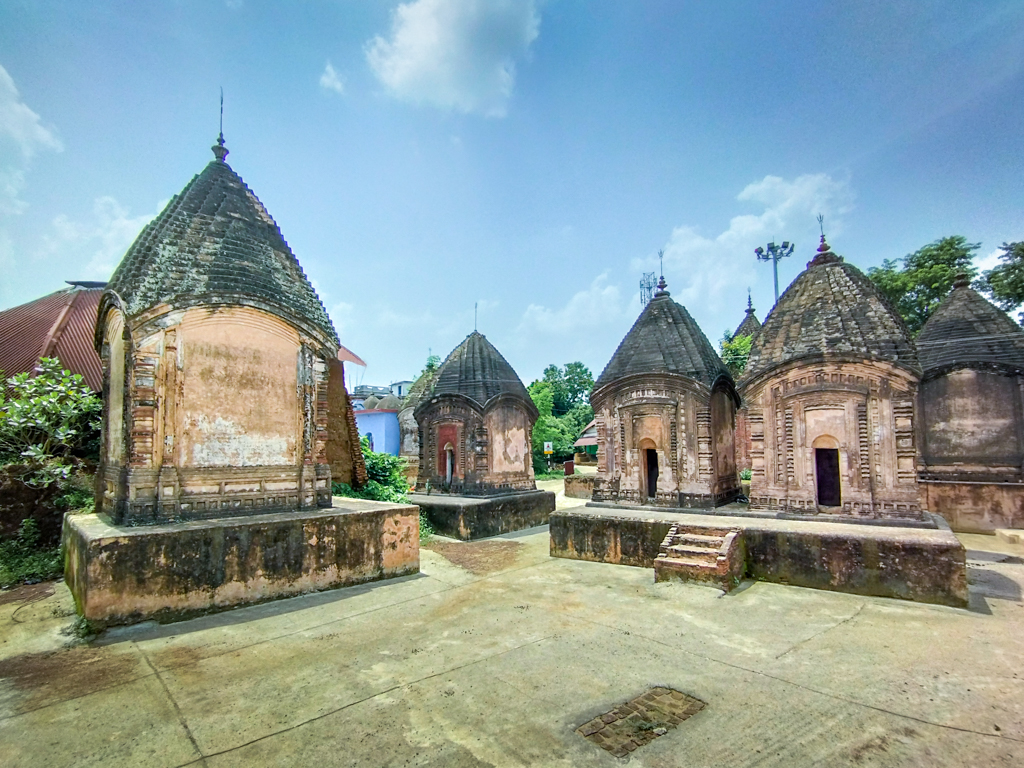
- Jan 25 2016
- Admin
- 12
- 3332
- Travel
Terracotta Temples of Maluti
The sacred landscape of India is teeming with infinite numbers of temples across its length and breadth. Most of the age-old temples have been repaired, restored, and preserved, thanks to the government’s efforts. However, plenty of others remain neglected and in dire need of protection. Heritage structures have a life of their own. Like forests and wildlife, heritage monuments require protection and planned conservation as they play a crucial role in piecing together India’s past.
Recently, we came across one such heritage site which is reeling under the threat of gradual extinction. The place is called Maluti, an otherwise ordinary tribal village located on the Jharkhand – West Bengal border. Maluti is home to 72 dilapidated terracotta temples. Some 400 years old, these temples possess ornate terracotta carvings and bear testimony to the brilliance of the Bengali terracotta artists. Unfortunately, owing to the lack of government endeavours, these temples are on the verge of complete ruination.According to some scholars, Maluti dates back to the era of the Shunga dynasty (185 – 75 BCE). There is even mention of a king of Pataliputra, who performed Ashwamedha Yajna here. Later, it became a seat of Vajrayana Buddhism.
Historical accounts later mention Maluti in the 15th century CE. Alauddin Hussain Shah, the Sultan of Gour, had once camped near Maluti. During this sojourn, the Sultan’s Begum had lost her favourite pet, a hawk or Baaj in Bengali. The hawk was rescued by a local, poor farmer named Basanta. The Sultan was pleasantly impressed and gifted him several acres of nearby land. The lucky farmer also received the epithet ‘Baaj’ for saving the hawk and came to be known as Raja Baaj Basanta.Baaj Basanta established his rule in the ‘Nankar’ or tax-free region, awarded to him by the Sultan. The fortune continued to smile upon the dynasty of Baaj Basanta till his great-grandson Rajchandra was defeated and played by the King of Rajnagar. Thereafter, his four sons shifted their capital to Maluti in around 1680 CE.
The four sons however lived separately. The eldest son was Rakharchandra, and his side was designated as ‘Raj Bari’ or the house of the King. The house of the second son, Prithivichandra, was called ‘Madhyam Bari’ or the second house. Ramchandra was the third brother, and his portion was named ‘Shikir Bari’ or house of the one-fourth share. The fourth and last brother, Madhavchandra, had six sons, and therefore his line came to be known as ‘Chhai Taraf’ or house of the six.
The four dynastic lines of Baaj Basanta went on a frenzied spree of constructing temples. Competition was stiff and each house aimed to excel the others by building more and more temples with terracotta decorations. As many as 108 temples were built by them in Maluti. As a result of their relentless effort, Maluti was soon converted into a temple town and even called ‘Gupto Kashi’ or hidden Kashi by many.

